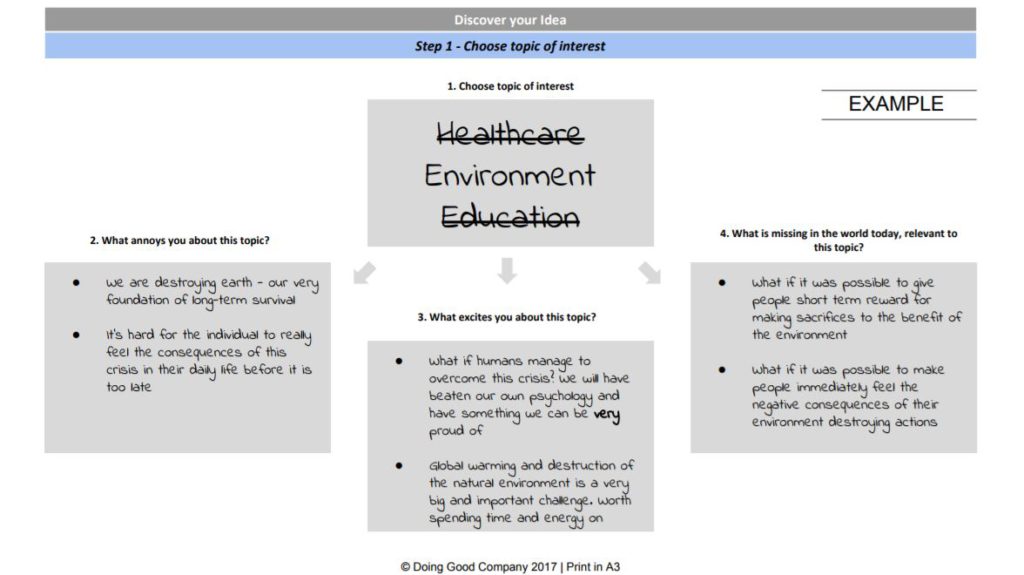Step 1 – Choose a topic of interest
The first step is to brainstorm topics and to verify if some of them are hot enough to spend more energy on?
A topic can be a large topic, such as “healthcare” and “environment”, or it can be a smaller, more concrete topic, such as “soda cans”. There are no rules for what constitutes a topic, other than it being something you are interested and, even better, that you think you possibly could get passionate about the topic. In this step, you will verify if there is indeed some passion connected to the topics you brainstorm.
You don’t need to come up with concrete product ideas at this point. Just spend some time on each topic and be aware of the feedback you get from yourself.
| Question | Description |
| Choose topic of interest | Start by brainstorming keywords defining each of the potential topics you will explore. If you find it hard to come up with topics, try reflecting on the following questions, taken from this post:
|
| What annoys you about this topic? | An excellent product idea solves an annoyance that you have. By focusing on your own annoyances, you know you are solving a real problem and not a problem you think someone else have.
An annoyance can be anything that feels painful for you or anything that is preventing you from experiencing pleasure. An annoyance can be very concrete, such as “it’s too difficult to do X” or “it’s too expensive to buy Y”, or it can be vaguer, such as “this is happening and I don’t like it”. In other words, you don’t have to be super concrete at this point. The most important thing is to reflect over the topic and to check if there are some annoyances connected to it. By focusing on annoyances your brain will start searching for ways to solve them and bringing you closer to some product ideas. |
| What excites you about this topic? | An excellent product idea should be connected to something you are excited about. For instance, you may be excited about something that relieves your annoyances. Or, you may feel that the topic you have chosen is deeply exciting for some specific reasons. Whatever it is, just write down some reason for your excitement.
If you are not excited about anything related to this topic, this is not the topic for you. Go back and choose another topic. |
| What is missing related to this topic? | Have any ideas about physical things or services that are missing in the world appeared in your head while thinking about annoyances and about what excites you? For instance, it could be a thing or service that relieves your annoyance or creates the world you are excited about? No need to be specific, just write down some high-level ideas.
Use “what if “-statements to tap into your emotional intelligence and bypass your critical logical thinking. “What if” statements let you think about a possible world while temporarily relieving your logical brain from judging whether this world is realistic or not. |
Move on to the next part, see Part 2, or jump straight to Part 3.

